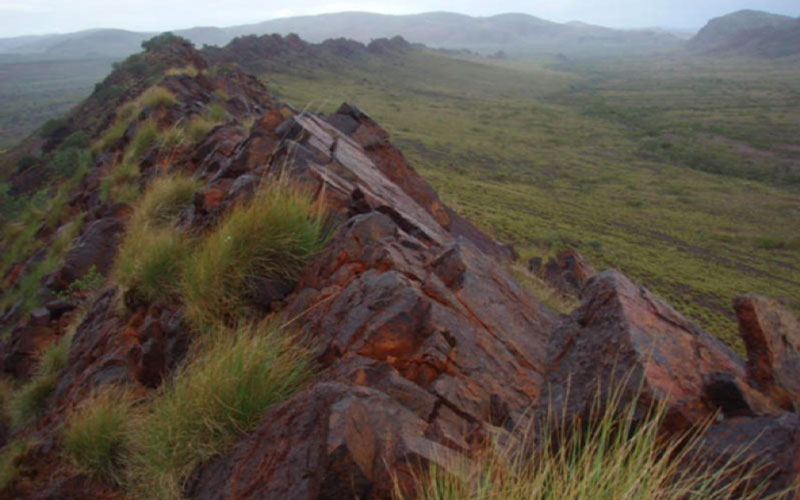Which stock has a market cap under $10 mil and a project with an NPV over $150 Million?

Pic: Bloomberg Creative / Bloomberg Creative Photos via Getty Images
Special Report: Strike is proceeding straight to a feasibility study for its Paulsens East project after unveiling a very appealing set of numbers in the scoping study.
An estimated net present value (NPV) of $155m and internal rate of return (IRR) at an eye-popping 449 per cent are the headline numbers that are doing the talking for Strike Resources’ (ASX:SRK) Paulsens East iron ore project in Western Australia’s Pilbara region.
Both NPV and IRR are metrics used to assess the profitability of a project and these numbers in the project scoping study are certainly a catalyst to drive the direct shipping ore (DSO) operation towards production.
DSO refers to minerals that require only simple crushing before they are exported, which keeps costs low.
Capital costs are also palatable at just $12m – including a contingency of $2m – with payback expected within four months.
Paulsens East is expected to produce 1.5 million tonnes each year of DSO iron ore over a minimum four-year life. During this time, it could generate $793m in revenue and potential net cashflow of about $189m using an assumed iron ore price of $US85 ($125) per tonne and average cash costs (FOB) of about $US45 per tonne.
There is also potential for both resource extension to extend mine life and active grade control to deliver higher iron ore grades from the project, which already boasts a high grade of 61.1 per cent iron ore.
It is little wonder then that Strike is moving immediately to a feasibility study with the goal of starting first production in the third quarter of 2020.
“The scoping study confirmed that Paulsens East has robust economics at current iron ore prices, driven principally by the high-quality nature of the iron ore contained within the deposit and the low life of mine strip ratio and proximity to excellent infrastructure,” managing director William Johnson said.
“The project has the potential to generate very significant cashflows for the company over an initial four-year mine life in comparison to our market capitalisation of only $8m, with a relatively low capital cost requirement.
“Furthermore, the project has additional upside potential with opportunities identified to extend the mine life, improve Fe grades and further reduce costs – all of which will be examined as part of the feasibility study.”

Project details
Paulsens East is a 3km-long outcropping high-grade hematite iron ore ridge about 233km southeast of the port of Onslow.
It has a current indicated resource of 9.6 million tonnes at 61.1 per cent iron ore that metallurgical test work has indicated will produce a premium high-grade “lump” product with low levels of harmful minerals such as sulphur, and low degradation during transport.
At least 75 per cent of the iron ore produced is expected to be this lump iron ore product that typically attracts a price premium compared to iron ore fines of the same grade.
Test work also indicates the lump material is about 2 per cent higher in iron grade than the fines material, which could attract a further price premium.
Ore from the project will be trucked to Onslow, where it will be stockpiled prior to being loaded directly from the wharf at Beadon Creek for transhipment into ocean going vessels for export to customers.
In the first year of mining, the waste to ore ratio will average only 1.3:1, resulting in a relatively low mining cost per tonne of product.
While this ratio will increase as mining becomes deeper, the overall waste to ore ratio over the four-year life of mine is still expected to be relatively low at 2.5:1.
This story was developed in collaboration with Strike Resources, a Stockhead advertiser at the time of publishing.
This story does not constitute financial product advice. You should consider obtaining independent advice before making any financial decisions.
UNLOCK INSIGHTS
Discover the untold stories of emerging ASX stocks.
Daily news and expert analysis, it's free to subscribe.
By proceeding, you confirm you understand that we handle personal information in accordance with our Privacy Policy.








